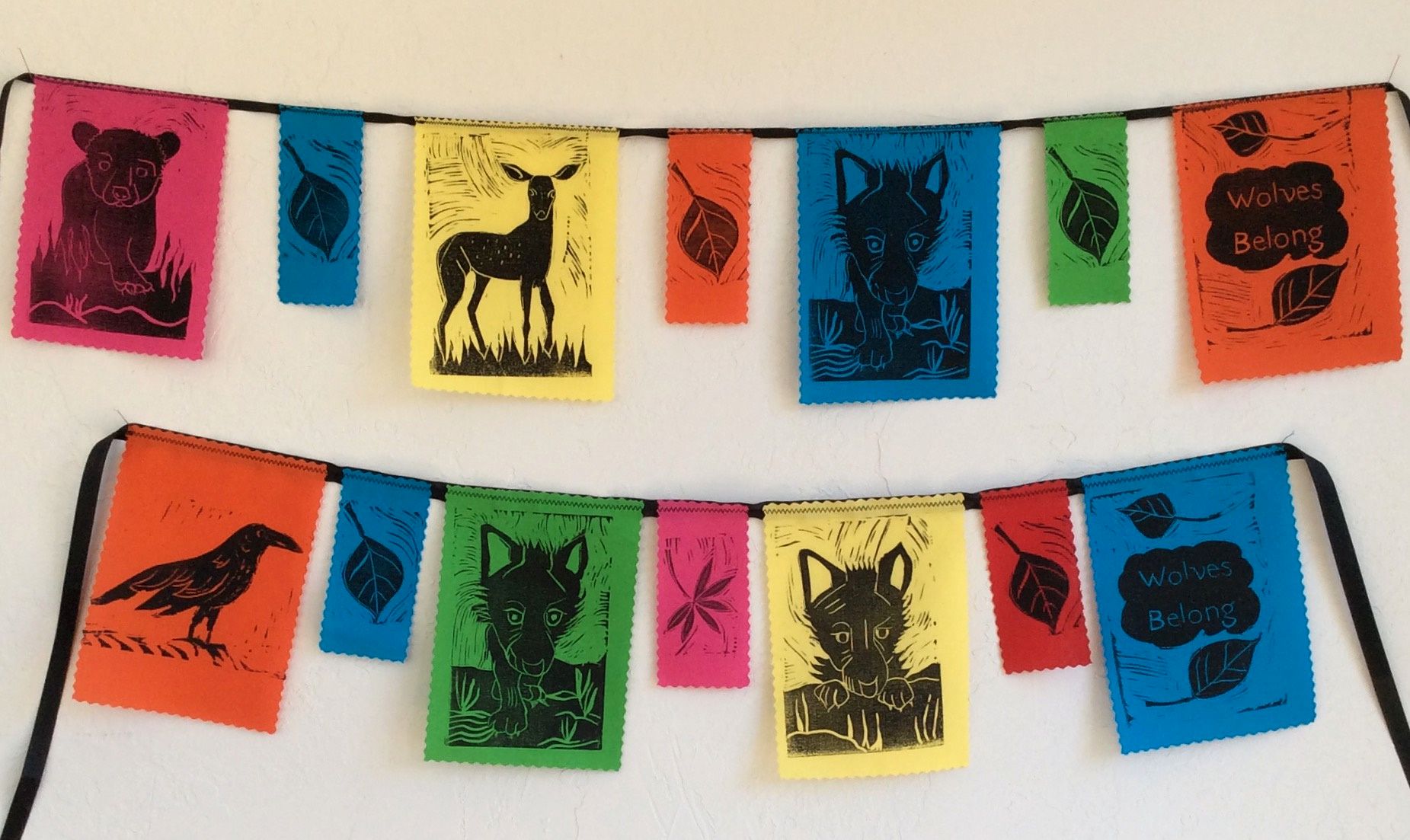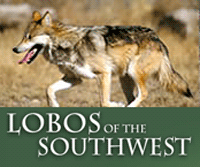Arizona Daily Sun (Original) Posted May 11, 2014 by Eric Betz
A collection of hunting advocacy groups have signed onto a plan with the Arizona Department of Game and Fish, calling Mexican gray wolf recovery impossible in the Southwest without habitat in Mexico. The plan seeks to create a corridor that would allow wolves to head toward Mexico and disperse.
Conservationists said the state plan is not based on science and would harm efforts to re-establish wolves in the Southwest.
Game and Fish bases its plan on a contested claim that 90 percent of the Mexican gray wolf historical range lies south of the U.S. border. The state plan would restrict habitat north of the border to areas it defines as historical habitat.
The state agency would also keep wolves from reaching Flagstaff and all areas west of Payson because they have a poor "prey base" and are too heavily populated with humans. The plan says that the North Rim of Grand Canyon National Park, as well as Colorado and Utah, should not be used because they are outside the historical range of the wolf.
But the state's idea that Mexican wolves should stay in a restricted historical region, including south of Interstate 40, contrasts with a scientific research as well as a draft recovery plan leaked from U.S. Fish and Wildlife Service several years ago.
Researchers studying wolf genetics at the University of California Los Angeles found that northern gray wolves wandered as far south as Arizona and Mexican wolves roamed north in Utah and Colorado. Their genetics were mixed and biologists say they can't rule out that Mexican gray wolves might have originally come south from Canada.
APEX PREDATOR
In a statement sent to the Daily Sun, Arizona Game and Fish Department Director Larry Voyles said that the agency's plan could potentially increase the proposed wolf population from "not less than 100" to as many as several hundred. The population is currently 83 animals, but the leading cause of death continues to be illegal shootings.
"The biggest impediment to the Mexican wolf reintroduction effort in the Southwest isn't biologically based. It's social tolerance for an apex predator on today's modern landscape that must support such a wide variety of conservation, recreation and economic uses," said chairman of the Arizona Game and Fish Commission J.W. Harris in a prepared statement. "This alternative represents the first time such a broad-based group has come together for Mexican wolf conservation, and it goes a long ways to enhancing social tolerance and, in turn, successful conservation of the species."
Among the groups listed as "critical stakeholders" on the Game and Fish plan are some two dozen ranching and hunting groups like Phoenix Varmint Callers Inc., a club dedicated to killing predators, and Big Game Forever. The latter was audited after receiving hundreds of thousands of dollars from the Utah state government to fight wolf recovery efforts.
"It pretty well totally ignores the best available science," said Kim Crumbo, Conservation Director with the Grand Canyon Wildlands Council.
Crumbo is a stakeholder on Fish and Wildlife's Mexican gray wolf recovery plan. "That's not enough wolves to ensure their long-term survival," Crumbo said. "It would result eventually in their extirpation and eventual extinction."
TWO WOLVES REACH FLAGSTAFF
The state's plan, released last month, is being offered as an alternative to the proposal floated by Fish and Wildlife to allow Mexican gray wolves to roam between Interstates 40 and 10 in Arizona and New Mexico. That plan is currently in its draft Environmental Impact Statement phase.
As the U.S. government seeks to delist the gray wolf, it's trying to find a new strategy for the beleaguered Mexican gray wolf recovery program. The smaller subspecies was extinct in the wild when Fish and Wildlife started reintroducing it to a small patch of land in the White Mountains of Arizona and New Mexico in 1998.
Researchers say that large chunks of land outside the recovery area could support wolves, but the animals that have left in the past have been brought back by wildlife officials or illegally killed. Two wolves have made it to the Flagstaff area. One was hit by a car on Highway 89 north of Flagstaff; the other was shot illegally after roaming as far as Mormon Lake.
There remain more captive wolves than wolves in the wild.
The state's plan calls on the federal government to minimize introducing captive-born wolves to the wild and instead relocate existing wolves to desired new locations.
"Any effort by USFWS to expand Mexican gray wolf presence in AZ-NM to a broader area or to greater numbers than are set forth in this Alternative may be aggressively litigated by one or more entities among the Cooperating Agencies and the supporting stakeholders," the plan by Arizona Game and Fish reads.
1,000 WOLVES 'UNACCEPTABLE'
Prior to the Mexican wolf being killed off in the wild, animals were found as far east as western Texas.
The leaked Fish and Wildlife document also outlines research that supports allowing the Mexican gray wolf to expand into the northern reaches of New Mexico and Arizona, as well as portions of Utah and Colorado, including the Rocky Mountains. The researchers contend that, regardless of historical range, endangered species are often introduced to areas where the habitat is suitable. A group of conservation scientists studying the area found that as many as 1,000 wolves could survive within three distinct populations.
That number has not been taken well by state wildlife managers, who see it as a threat to sport hunting and trapping in Arizona. The state's plan suggests killing wolves if their population grows large enough to kill more than 15 percent of prey like elk and deer.
"The numbers suggested to date by USFWS of 900 to a thousand or more are unrealistic, unmanageable and unacceptable," the state and its partners wrote in their plan.
Eric Betz can be reached at 556-2250 or This email address is being protected from spambots. You need JavaScript enabled to view it..
Alternative plan for wolf reintroduction
— Cooperating Agencies
Arizona Game and Fish Department
Eastern Arizona Counties Organization
Gila County
Graham County
Greenlee County
Navajo County
— Stakeholders in support of plan as basis for further discussion:
Anglers United
Arizona Antelope Foundation
Arizona BASS
Arizona Big Game Super Raffle
Arizona Cattle Growers' Association
Arizona Chapter of the National Wild Turkey Federation
Arizona Deer Association
Arizona Desert Bighorn Sheep Society
Arizona Elk Society
Arizona Houndsmen
Arizona Sportsmen for Wildlife Conservation
Arizona Trappers Association
Arizona Wildlife Federation
Big Game Forever
ES Advisement, LLC (AZ)
Coconino Sportsmen
Outdoor Experience 4 All
Phoenix Varmint Callers, Inc.
Sportsmen's Constituent Group
The BASS Federation
The Mule Deer Foundation
Yuma Valley Rod & Gun Club
1-2-3-Go





